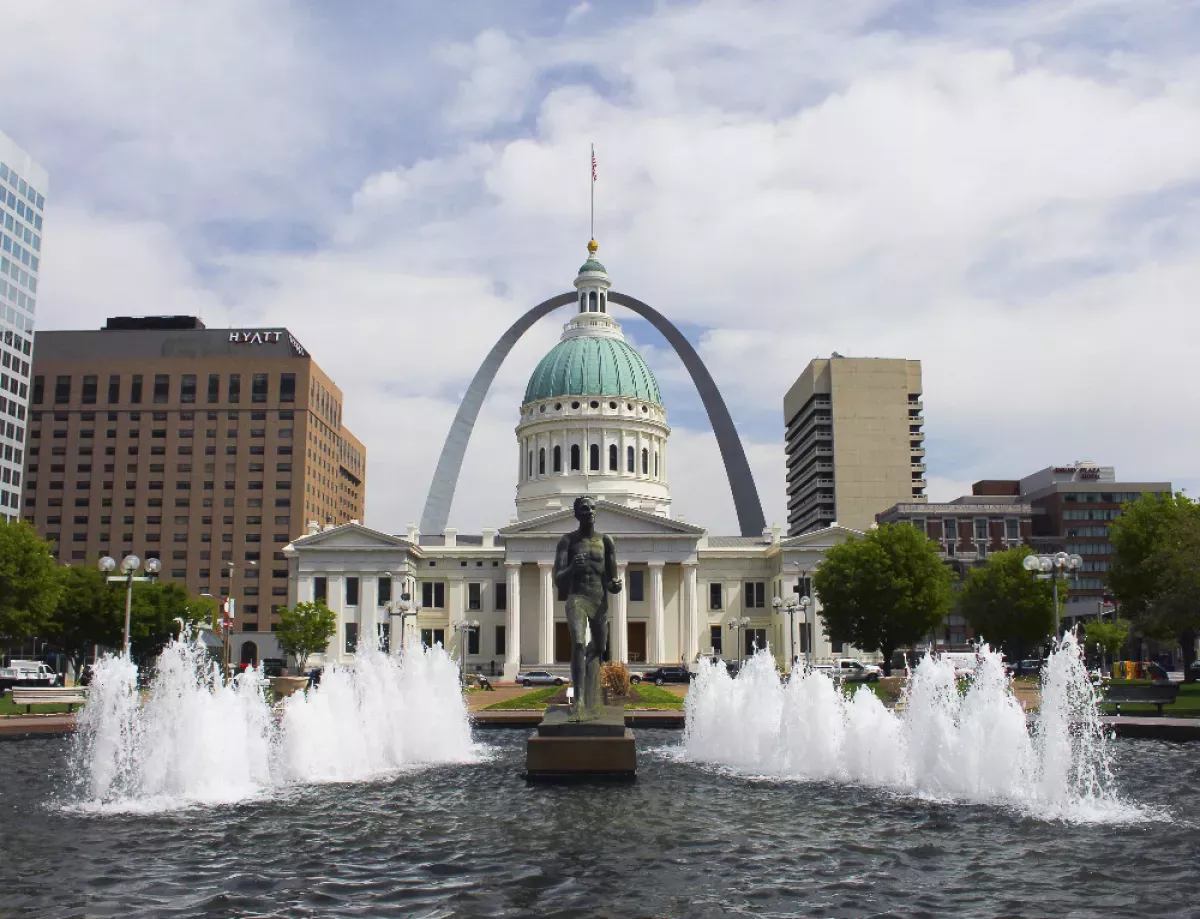St. Louis is an independent city located in Missouri, near the convergence of the Mississippi and Missouri rivers. With a population of over 300,000 in the city proper and over 2.8 million in its metropolitan area (extending into Illinois), it is Missouri's largest metropolitan area and the second-largest in Illinois. St. Louis' combined statistical area ranks as the 20th-largest in the United States.
1900: St. Louis as fourth-largest city in 1900 census
By the 1900 census, St. Louis was the fourth largest city in the country.
1900: Second Presbyterian Church constructed in 1900
In 1900, the Second Presbyterian Church of St. Louis was constructed in Richardsonian Romanesque style.
1900: Streetcar system strike of 1900
In 1900, the entire streetcar system was shut down by a several months-long strike, resulting in significant unrest and violence against the striking workers in the city.
1902: St. Louis Browns in AL
The St. Louis Browns played in the American League (AL) from 1902.
1904: St. Louis hosts Louisiana Purchase Exposition and Summer Olympics in 1904
In 1904, St. Louis hosted the Louisiana Purchase Exposition, also known as the St. Louis World's Fair, and the Summer Olympics.
1904: St. Louis hosts World's Fair in 1904
In 1904, the city of St. Louis hosted a world's fair at Forest Park called the Louisiana Purchase Exposition.
1904: St. Louis hosts the World's Fair and Olympics in 1904
In 1904, the city of St. Louis hosted the World's Fair and the Olympics, becoming the first non-European city to host the games. The formal name for the 1904 World's Fair was the Louisiana Purchase Exposition.
1904: Strassberger Music Conservatory Building
The Strassberger Music Conservatory Building was constructed at 2300 Grand in 1904, the same year as the World's Fair. Otto Wilhelmi was the architect.
1906: St. Louis Stars/Giants Baseball
St. Louis was home to the St. Louis Stars (baseball), also known as the St. Louis Giants from 1906.
1907: Construction of Cathedral Basilica of St. Louis begins in 1907
The Cathedral Basilica of St. Louis, designed by Thomas P. Barnett, construction started in 1907 in the Neo-Byzantine style.
1908: St. Francis de Sales Oratory Completion
St. Francis de Sales Oratory, a neo-Gothic church in South St. Louis, was completed in 1908. It is the second largest church in the city.
1911: Conservatory Students
In 1911, the Strassberger Music Conservatory had over 1,100 students.
1914: Construction of Cathedral Basilica of St. Louis completed in 1914
The Cathedral Basilica of St. Louis, designed by Thomas P. Barnett, was constructed between 1907 and 1914 in the Neo-Byzantine style.
1916: Residential segregation ordinance passed in 1916
In 1916, St. Louis passed a residential segregation ordinance during the Jim Crow Era, stating that if 75% of the residents of a neighborhood were of a certain race, no one from a different race was allowed to move in.
1920: St. Louis as fourth-largest city until 1920 census
From 1870 until the 1920 census, St. Louis was the fourth-largest city in the United States.
1920: St. Louis Stars/Giants Baseball
St. Louis was home to the St. Louis Stars (baseball), also known as the St. Louis Giants who played in the Negro league baseball from 1920.
1921: St. Louis Stars/Giants Baseball
St. Louis was home to the St. Louis Stars (baseball), also known as the St. Louis Giants from 1906 to 1921.
1923: St. Louis All-Stars NFL Team
In 1923, the St. Louis All-Stars played in the city as part of the National Football League (NFL).
1926: Douglass University founded in 1926
In 1926, Douglass University, a historically black university, was founded by B. F. Bowles in St. Louis, where no other college in St. Louis County admitted black students at the time.
1928: St. Louis Stars/Giants Baseball
St. Louis was home to the St. Louis Stars (baseball), also known as the St. Louis Giants who played in the Negro league baseball from 1920 to 1931 and won championships in 1928.
1928: Shift to Democratic Stronghold
The city of St. Louis shifted from Republican voting to a Democratic stronghold at the presidential level since 1928.
1929: St. Louis automakers until 1929
Between 1900 and 1929, St. Louis had around 220 automakers, representing nearly 10 percent of all American carmakers, with approximately half exclusively building cars in the city.
1930: St. Louis Stars/Giants Baseball
St. Louis was home to the St. Louis Stars (baseball), also known as the St. Louis Giants who played in the Negro league baseball from 1920 to 1931 and won championships in 1930.
1931: St. Louis Stars/Giants Baseball
St. Louis was home to the St. Louis Stars (baseball), also known as the St. Louis Giants who played in the Negro league baseball from 1920 to 1931 and won championships in 1928, 1930, and 1931.
1934: St. Louis Eagles Season
In 1934, St. Louis was home to the St. Louis Eagles, who played in the 1934–35 season.
1934: St. Louis Gunners NFL Team
In 1934, the St. Louis Gunners played in the city as part of the National Football League (NFL).
April 1940: Ban on soft coal in St. Louis in April 1940
In April 1940, the city of St. Louis banned the use of soft coal mined in nearby states to combat its severe air pollution issue.
1944: All-St. Louis World Series
The 1944 World Series was an all-St. Louis World Series, matching up the St. Louis Cardinals and St. Louis Browns at Sportsman's Park, won by the Cardinals in six games.
1946: Air pollution reduction in St. Louis by 1946
By 1946, St. Louis had successfully reduced air pollution by about 75% through measures like banning soft coal and hiring inspectors.
1946: Bombers in BAA
From 1946 to 1949, St. Louis was home to the St. Louis Bombers of the Basketball Association of America.
1948: Racial covenants ruled unconstitutional in 1948
In 1948, the U.S. Supreme Court ruled racial covenants unconstitutional in the Shelley v. Kraemer case, following a lawsuit offered by St. Louisans in challenge of such covenants.
1949: Bombers in BAA
From 1946 to 1949, St. Louis was home to the St. Louis Bombers of the Basketball Association of America and then from 1949 to 1950 in the National Basketball Association.
1949: Last Republican Mayor
The city of St. Louis has not had a Republican mayor since 1949.
1950: Bombers in NBA
From 1949 to 1950, St. Louis was home to the St. Louis Bombers in the National Basketball Association.
1950: Peak Population
In 1950, St. Louis reached its peak population. The Census Bureau reported that the city's population was 82% White and 17.9% African American in 1950.
1950: St. Louis peak population in 1950
St. Louis reached its peak population of 856,796 at the 1950 census.
1953: Lowest precipitation recorded in St. Louis in 1953
Precipitation averaged 20.59 in (523 mm) in St. Louis in 1953.
1953: Last Republican in U.S. House
Since 1953, a Republican has not represented a significant portion of St. Louis in the U.S. House.
1953: Browns Move to Baltimore
The St. Louis Browns played in the American League (AL) from 1902 to 1953, before moving to Baltimore, Maryland to become the current incarnation of the Orioles.
July 14, 1954: Highest recorded temperature in St. Louis on July 14, 1954
The highest recorded temperature in St. Louis was 115 °F (46 °C) on July 14, 1954.
1955: Hawks Play at Kiel Auditorium
From 1955 to 1968, the St. Louis Hawks of the National Basketball Association (NBA) played at Kiel Auditorium.
1957: Hawks in NBA Finals
In 1957, the St. Louis Hawks played in the NBA Finals.
1958: Hawks Win NBA Championship
In 1958, the St. Louis Hawks won the NBA championship.
1960: Bosnian Settlement
Around 1960, fifteen families from Bosnia settled in St. Louis.
1960: St. Louis Cardinals NFL Team
From 1960 to 1987, St. Louis was home to the St. Louis Cardinals in the National Football League (NFL).
1960: Hawks in NBA Finals
In 1960, the St. Louis Hawks played in the NBA Finals.
1961: Hawks in NBA Finals
In 1961, the St. Louis Hawks played in the NBA Finals.
1962: St. Louis Abbey Completion
The St. Louis Abbey's distinctive architectural style garnered multiple awards at the time of its completion in 1962.
1964: Civil rights activists protest at Gateway Arch construction in 1964
In 1964, civil rights activists protested at the construction of the Gateway Arch to advocate for the inclusion of African Americans in skilled trade unions. The Department of Justice subsequently filed a suit against the unions under the Civil Rights Act of 1964.
1964: Cardinals Win Playoff Bowl
In 1964, the football Cardinals won the Playoff Bowl for third place against the Green Bay Packers with a score of 24–17.
October 28, 1965: Completion of Gateway Arch
On October 28, 1965, the 630-foot tall Gateway Arch, a National Memorial designed by Eero Saarinen, was completed.
1965: Eads Bridge symbolic image until 1965
The Eads Bridge became a symbolic image of the city of St. Louis, from the time of its erection until 1965 when the Gateway Arch Bridge was constructed.
November 1967: KSHE 95 FM Broadcasts Rock Music
Since November 1967, KSHE 95 FM "Real Rock Radio" has broadcast rock music, making it the longest-running rock radio station in the United States.
1967: Blues Added to NHL in Expansion
In 1967, the St. Louis Blues were one of six teams added to the National Hockey League (NHL) as part of an expansion.
1968: Hawks Move to Atlanta
From 1955 to 1968, the St. Louis Hawks of the National Basketball Association (NBA) played at Kiel Auditorium. In 1968 the Hawks moved to Atlanta.
1970: Bosnian Settlement
Around 1970, fifteen families from Bosnia settled in St. Louis.
1974: Spirits of St. Louis in ABA
From 1974 to 1976, St. Louis was home to the Spirits of St. Louis of the American Basketball Association.
1974: Cardinals in NFL Playoffs
In 1974, the St. Louis Cardinals advanced to the NFL playoffs.
1975: Cardinals in NFL Playoffs
In 1975, the St. Louis Cardinals advanced to the NFL playoffs.
1976: End of Spirits of St. Louis in ABA
From 1974 to 1976, St. Louis was home to the Spirits of St. Louis of the American Basketball Association when the ABA and NBA merged.
1976: Construction of One US Bank Plaza in 1976
One US Bank Plaza, the local headquarters for US Bancorp, was constructed in 1976 in the structural expressionist style.
1982: Serra Sculpture Park
In 1982 Richard Serra sculpture Twain was added to the Serra Sculpture Park
1982: Cardinals in NFL Playoffs
In 1982, the St. Louis Cardinals advanced to the NFL playoffs.
1982: Missouri Pacific Railroad Merger
Missouri Pacific Railroad merged with the Omaha, Nebraska-based Union Pacific Railroad in 1982.
1986: Construction of the former AT&T building in 1986
The former AT&T building at 909 Chestnut Street was built in 1986.
1987: End of Cardinals in St. Louis
From 1960 to 1987, St. Louis was home to the St. Louis Cardinals in the National Football League (NFL).
1988: Last Republican Presidential Success
In 1988, George H. W. Bush was the most recent Republican to win even a quarter of the city's votes in a presidential election.
1989: Construction of One Metropolitan Square in 1989
One Metropolitan Square, which is the tallest building in St. Louis, was built in 1989.
1992: Bosnian War
After the Bosnian War started in 1992, more Bosnian refugees began arriving in St. Louis.
1993: Great Flood of 1993
In 1993, St. Louis experienced severe flooding, known as the Great Flood of 1993, which occurred in spring and summer due to the melting of thick snow cover upstream on the Missouri or Mississippi Rivers.
1993: MetroLink uses Eads Bridge rail deck since 1993
Since 1993, the St. Louis MetroLink light rail system has used the rail deck of the Eads Bridge.
1993: Peak in Index Crime Rate
Since 2014 the city of St. Louis has had, as of April 2017, one of the highest murder rates, per capita, in the United States. Crime rates declined almost every year since the peak in 1993 (16,648), to the 2014 level of 7,931.
1993: Flooding of River des Peres in 1993
The lower section of the River des Peres was the site of some of the worst flooding of the Great Flood of 1993.
1995: Rams Arrive in St. Louis
From 1995 to 2015, St. Louis was home to the St. Louis Rams in the National Football League (NFL).
2000: Bosnian Refugees
By 2000, tens of thousands of Bosnian refugees settled in St. Louis with the help of Catholic aid societies.
2000: Completion of the Thomas F. Eagleton United States Courthouse in 2000
In the 1990s, St. Louis saw the construction of the largest United States courthouse by area, the Thomas F. Eagleton United States Courthouse, completed in 2000.
2000: Charter Schools Operate in the City
Since 2000, charter schools have operated in the city of St. Louis using authorization from Missouri state law.
April 17, 2001: Francis Slay Takes Office
On April 17, 2001, Francis Slay took office as mayor of St. Louis.
2002: Cortex Innovation Community founded in 2002
The Cortex Innovation Community, located within the city's Central West End neighborhood, was founded in 2002 and has become a multi-billion dollar economic engine for the region.
2003: WashU Med School Ranking
In 2003, Washington University School of Medicine in St. Louis was ranked among the top medical schools in the country by U.S. News & World Report.
2004: WashU Med School Ranking
In 2004, Washington University School of Medicine in St. Louis was ranked among the top medical schools in the country by U.S. News & World Report.
2005: Violent Crime Decline
Since 2014 the city of St. Louis has had, as of April 2017, one of the highest murder rates, per capita, in the United States. Between 2005 and 2014, violent crime declined by 20%.
2008: Concourse D Closed at Airport
In 2008, Concourse D was closed at St. Louis Lambert International Airport.
2008: Registered Voters in the City
In 2008, there were 257,442 registered voters in St. Louis.
2009: The Ghosts of Versailles
In 2009, Opera Theatre of St. Louis presented John Corigliano's "The Ghosts of Versailles" in a smaller-scale version.
2010: United States Census
According to the 2010 United States census, St. Louis had 319,294 people living in 142,057 households, of which 67,488 households were families. The population density was 5,158.2 people per square mile (1,991.6 people/km).
2010: Primary Languages
As of 2010, 91.05% (270,934) of St. Louis city residents age 5 and older spoke English at home as a primary language, while 2.86% (8,516) spoke Spanish. In total, 8.95% (26,628) of St. Louis's population age 5 and older spoke a mother language other than English in 2010.
2010: Charitable Donations and Volunteerism
In 2010, St. Louis's per-capita rates of online charitable donations and volunteerism were among the highest among major U.S. cities.
2010: Registered Voters in the City
In 2010, there were 239,247 registered voters in St. Louis.
2010: Population increase in Forest Park Southeast between 2010 and 2020
The population of the Forest Park Southeast neighborhood has increased by 19% from the 2010 to 2020 Census.
2010: KFUO-FM
Until 2010, St. Louis was also home to KFUO-FM, one of the oldest classical music FM radio stations west of the Mississippi River.
2011: World Chess Hall of Fame Moved
In 2011, the World Chess Hall of Fame was moved to St. Louis by Rex Sinquefield.
2011: Washington Avenue named one of 10 Great Streets in 2011
The American Planning Association designated Washington Avenue as one of 10 Great Streets for 2011.
2012: Port Authority adds fire and rescue craft
In 2012, the Port Authority added a new small fire and rescue craft to its fleet.
2012: Registered Voters in the City
In 2012, there were 238,253 registered voters in St. Louis.
2013: Residential construction in Forest Park Southeast between 2013 and 2018
Between 2013 and 2018, over $50 million worth of residential construction has been built in the Forest Park Southeast neighborhood.
2013: Port Authority adds fire and rescue craft
In 2013, the Port Authority added another new small fire and rescue craft to its fleet.
2013: Sinquefield Cup Tournament Started
In 2013, the Sinquefield Cup Tournament started in St. Louis.
2013: St. Louis Beacon Merges with KWMU
In 2013, the St. Louis Beacon, an online newspaper, merged with KWMU.
2013: Budget was $985.2 Million
In 2013, the fiscal year budget was $985.2 million.
2013: Furniture Brands International
Most of the assets of Furniture Brands International were sold to Heritage Home Group in 2013, which moved to North Carolina.
2013: Generosity Ranking
St. Louis is one of the most generous cities in the United States, ranking ninth in 2013.
2014: Sinquefield Cup Highest-Rated Tournament
In 2014, the Sinquefield Cup was the highest-rated chess tournament of all time.
2014: Budget Topped $1 Billion
In 2014, the fiscal year budget topped $1 billion for the first time.
2014: The Death of Klinghoffer Controversy
John Adams's "The Death of Klinghoffer", which touched off protests and controversy when performed by the Metropolitan Opera in 2014, had no such problems in St. Louis three years before, because the company fostered a citywide discussion.
2014: Index Crime Rate
Since 2014 the city of St. Louis has had, as of April 2017, one of the highest murder rates, per capita, in the United States. Crime rates declined almost every year since the peak in 1993 (16,648), to the 2014 level of 7,931. Between 2005 and 2014, violent crime declined by 20%.
2015: All Democratic Aldermen
As of 2015, all 28 of the city's aldermen are Democrats.
2015: End of Rams in St. Louis
From 1995 to 2015, St. Louis was home to the St. Louis Rams in the National Football League (NFL).
2015: Saint Louis FC Begins Play
From 2015 to 2020, Saint Louis FC of the USL Championship played in the area at World Wide Technology Soccer Park.
2015: Golden State Warriors Season
In 1884, The St. Louis Maroons won the Union Association pennant and started the season with 20 straight wins, a feat that was not surpassed by any major professional sports team in the United States until the 2015-16 Golden State Warriors season when they started their NBA season with 24 straight wins.
2015: Homicides in 2015
In 2015, St. Louis recorded 188 homicides (59.3 homicides per 100,000). In 2015, the index crime rate reversed the 2005–2014 decline to a level of 8,204 per 100,000.
2015: Highest precipitation recorded in St. Louis in 2015
Precipitation averaged 61.24 in (1,555 mm) in St. Louis in 2015.
October 2016: Homicide Suspects
As of October 2016, 7 of the homicide suspects were white, 95 black, 0 Hispanic, 0 Asian and 1 female out of the 102 suspects.
2016: Lambert Airport Statistics
In 2016, St. Louis Lambert International Airport had more than 255 daily departures to about 90 domestic and international locations, serving more than 15 million passengers.
2016: St. Louis Rams relocate to Los Angeles in 2016
In 2016, the St. Louis Rams of the National Football League controversially returned to Los Angeles.
April 2017: Murder Rates
As of April 2017, the city of St. Louis had one of the highest murder rates, per capita, in the United States.
April 18, 2017: Francis Slay Leaves Office
On April 18, 2017, Francis Slay left office after serving as mayor of St. Louis for 16 years and six days.
2017: St. Louis sues NFL in 2017
In 2017, the city of St. Louis sued the NFL, alleging the league breached its own relocation guidelines.
2018: St. Louis metro area
According to a 2018 estimate, the St. Louis metro area included about 3 million residents and the city included about 300,000 residents.
2018: Residential construction in Forest Park Southeast between 2013 and 2018
Between 2013 and 2018, over $50 million worth of residential construction has been built in the Forest Park Southeast neighborhood.
2018: Jefferson National Expansion Memorial Renamed
In 2018, the Jefferson National Expansion Memorial was renamed Gateway Arch National Park.
2019: Stanley Cup Championship
In 2019, St. Louis became the eighth North American city to have won titles in all four major leagues (MLB, NBA, NFL, and NHL) when the Blues won the Stanley Cup championship.
2019: Blues Win First Stanley Cup
In 2019, the St. Louis Blues won their first Stanley Cup after defeating the Boston Bruins in the final, making St. Louis the eighth city to win a championship in each of the four major U.S. sports.
2020: Population Decline
As of the 2020 Census, St. Louis has lost 64.8% of its population since the 1950 United States census. During this period, the population of Greater St. Louis, which includes more than one county, has grown every year and continues to do so.
2020: Saint Louis FC End of Play
From 2015 to 2020, Saint Louis FC of the USL Championship played in the area at World Wide Technology Soccer Park.
2020: BattleHawks Inaugural Season
In 2020, the St. Louis BattleHawks of the XFL began play at The Dome at America's Center.
2020: Population of St. Louis in 2020
In 2020, the city proper of St. Louis had a population of 301,578, while the metropolitan area, including parts of Illinois, had an estimated population of over 2.8 million.
2020: Population increase in Forest Park Southeast between 2010 and 2020
The population of the Forest Park Southeast neighborhood has increased by 19% from the 2010 to 2020 Census.
April 20, 2021: Tishaura Jones Takes Office
On April 20, 2021, Tishaura Jones took office as the mayor of St. Louis, becoming the first African-American woman to hold the post.
2021: Top Employers in the City
According to St. Louis's 2022 Annual Comprehensive Financial Report, the top employers in the city only as of 2021 are:
2021: GDP Per Capita
Greater St. Louis had a GDP per capita of $68,574 in 2021, up 10% from the previous year.
2021: NFL settles with St. Louis for $790 million in 2021
In 2021, the NFL and Rams owner Stan Kroenke agreed to settle out of court with the city of St. Louis for $790 million.
2022: St. Louis Annual Comprehensive Financial Report
According to St. Louis's 2022 Annual Comprehensive Financial Report, the top employers in the city only as of 2021 are:
2022: St. Louis City 2 Begins Play
In 2022, St. Louis City 2 of MLS Next Pro began play at Energizer Park.
2022: Sheriff's Office Expanded Powers
In 2022, the City of St. Louis Sheriff's Office gained the ability to make arrests and traffic stops.
2022: GDP of Greater St. Louis in 2022
In 2022, the GDP of Greater St. Louis was $209.9 billion.
2022: Gross Domestic Product
The gross domestic product of Greater St. Louis was $209.9 billion in 2022, up from $192.9 billion the previous year.
2023: St. Louis City SC Debut
A third major team, the St. Louis City SC of Major League Soccer, began play in 2023.
2023: Top Employers in Greater St. Louis
According to the St. Louis Business Journal, the top employers in Greater St. Louis as of March 29th, 2023 are:
2023: BattleHawks Return After Hiatus
In 2023, the BattleHawks returned to play in the XFL after a two-year hiatus of the league.
2024: Fortune 500 Companies
As of 2024, Greater St. Louis is home to six Fortune 500 companies: Centene Corporation, Reinsurance Group of America, Emerson Electric, Edward Jones, Graybar Electric, and Ameren.
2024: Employment
As of November 2024, the education and health services industries employed the greatest amount of people in the Greater St. Louis region, followed by the trade, transportation, and utilities industries and professional and business services.
2024: Riverfront Times Closed
In 2024, the Riverfront Times closed.
2024: Degradation of Mill Creek Valley featured in 2024 Reparations Commission Report
The degradation and razing of Mill Creek Valley was featured as an example of disenfranchisement in the 2024 Reparations Commission Report.
2025: Rematriation of Sugarloaf Mound to Osage Nation in 2025
Sugarloaf Mound in South St. Louis was rematriated to the Osage Nation in 2025.
Mentioned in this timeline
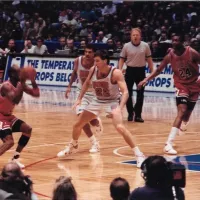
Basketball is a team sport played on a rectangular court...
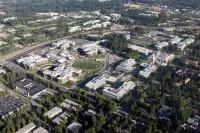
Microsoft an American multinational technology corporation headquartered in Redmond Washington...
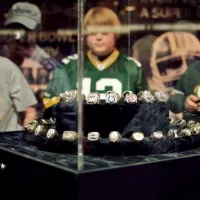
The Super Bowl is the annual championship game of the...

The Boeing Company is a multinational corporation and one of...
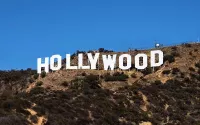
Los Angeles is the most populous city in California and...
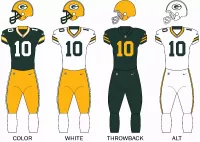
The Green Bay Packers are an NFL team based in...
Trending

11 days ago Dick Vitale and Charles Barkley Team Up for College Basketball Broadcasts This Season

1 month ago Kim Kardashian's 'All's Fair' TV show faces criticism despite Niecy Nash's defense.
10 days ago Marcus Freeman: Notre Dame coach considered for Giants head coaching vacancy in NFL.
Jeremiyah Love is an American college football running back He currently plays for the Notre Dame Fighting Irish He is...
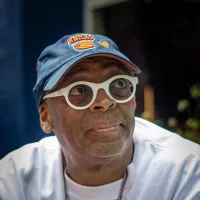
7 months ago Trump's Tariffs Threaten Cannes 2025, SAG-AFTRA Responds, Impacting Spike Lee's Industry.

7 months ago Mitchell Robinson's Playoff Impact: Knicks' Gamble Pays Off as Hart Shines in Game 3
Popular

Candace Owens is an American conservative political commentator and author...

Ilhan Omar is an American politician currently serving as the...

XXXTentacion born Jahseh Dwayne Ricardo Onfroy was a controversial yet...

Tom Cotton is an American politician and Army veteran currently...
The Kennedy Center Honors are annual awards recognizing individuals and...
Matt and Ross Duffer known as the Duffer Brothers are...
